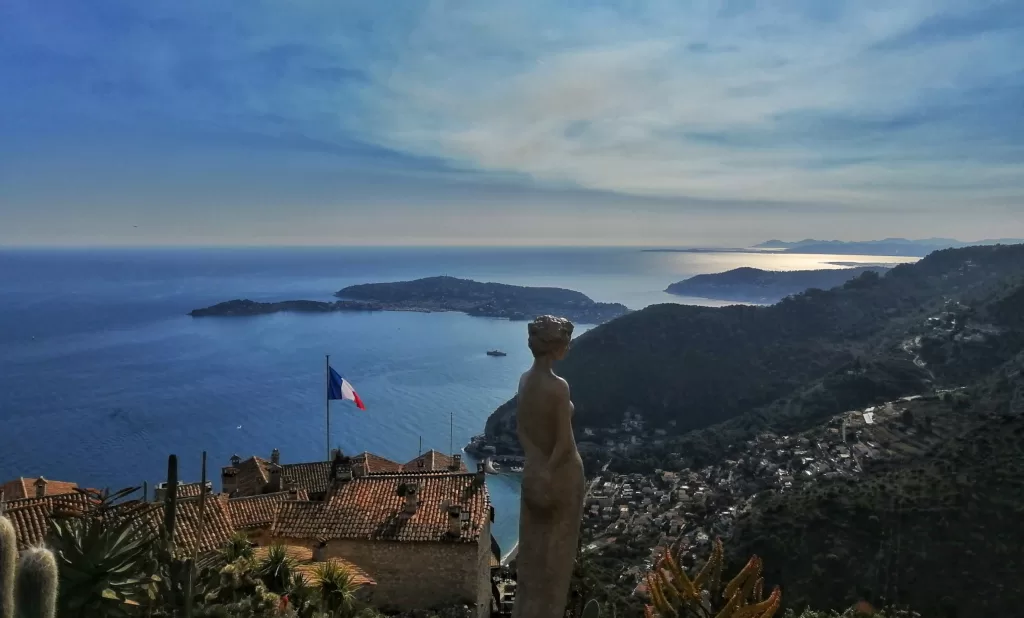 The French Riviera, Côte d’Azur, located in southwest France, ranks as my favorite place in France. Contrasting with Paris’s often dreary weather and hectic atmosphere, the Riviera always feels bright and lively. The unique Mediterranean blue of the sea here is unforgettable.
The French Riviera, Côte d’Azur, located in southwest France, ranks as my favorite place in France. Contrasting with Paris’s often dreary weather and hectic atmosphere, the Riviera always feels bright and lively. The unique Mediterranean blue of the sea here is unforgettable.
I’ve been to the Riviera twice, both times in spring. I recommend this as the best time to visit since summers can be overly hot, and the greenery of spring complements the enchanting blue sea beautifully.
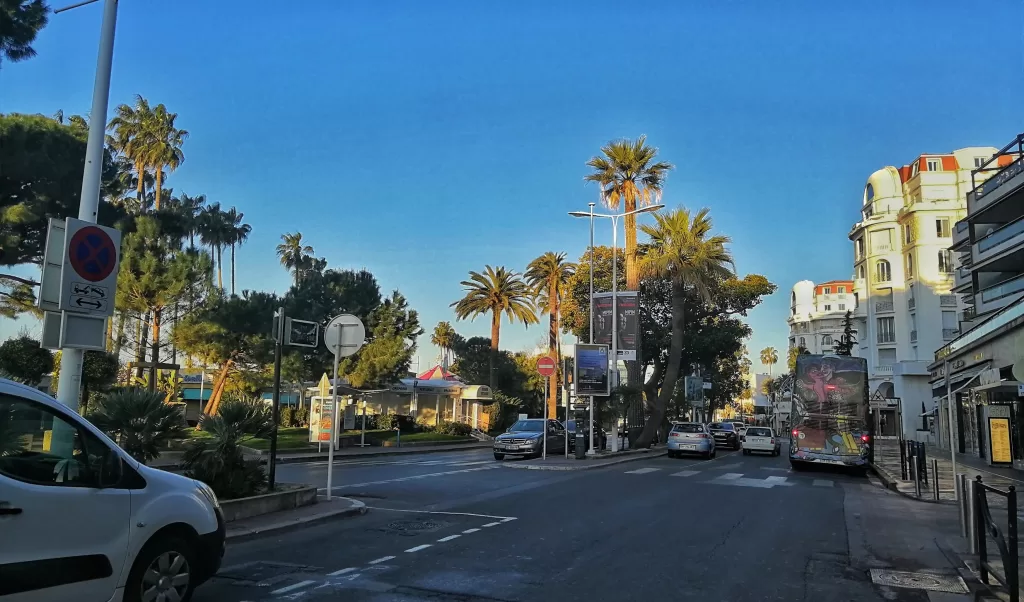 Cannes: Known mostly for its famous Film Festival, Cannes, to me, was the least remarkable city on the French Riviera. Visiting two months before the festival, I found it exceptionally quiet, with few tourists and many beach areas closed due to festival preparations. Villa Domergue, a meeting spot for the film fest jury, was inaccessible. The old town had some interesting graffiti and shows, but it was notably quiet in the evenings and mornings.
Cannes: Known mostly for its famous Film Festival, Cannes, to me, was the least remarkable city on the French Riviera. Visiting two months before the festival, I found it exceptionally quiet, with few tourists and many beach areas closed due to festival preparations. Villa Domergue, a meeting spot for the film fest jury, was inaccessible. The old town had some interesting graffiti and shows, but it was notably quiet in the evenings and mornings.
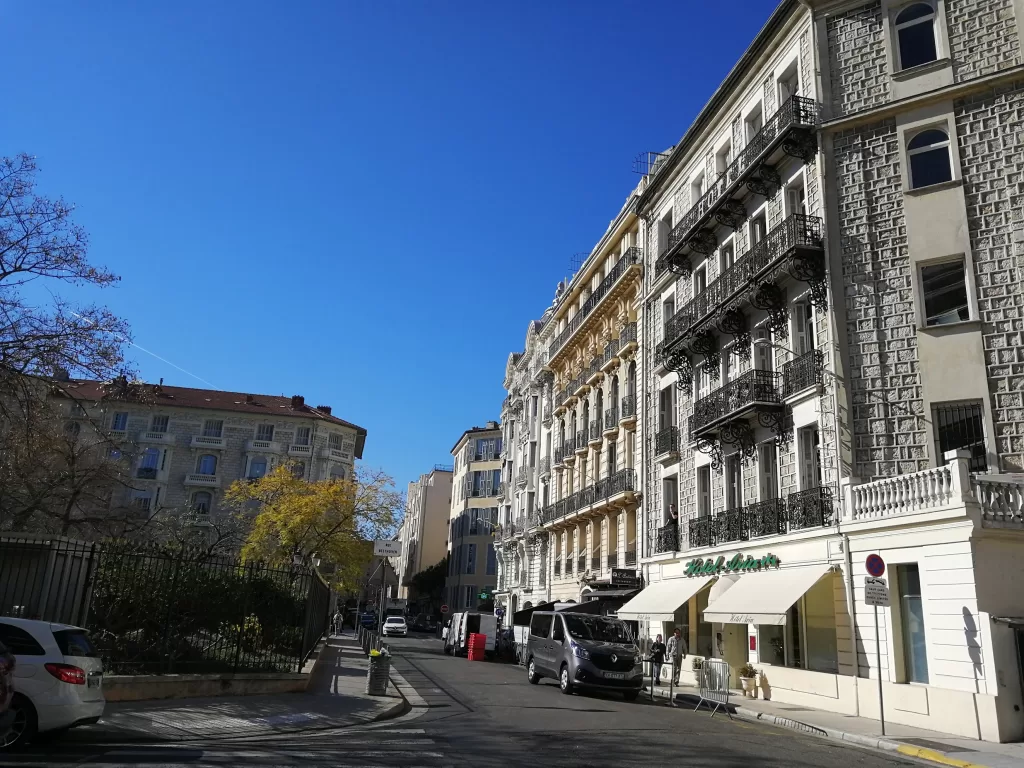 Nice: Nice stands out from Cannes as a more popular destination for tourists, thanks to its extensive coastline and the captivating blue sea next to the city. During my initial visit, I was struck by the intricately styled Mediterranean houses. My tight schedule meant I couldn’t spend much time at the beach, but departing by plane offered one of the most beautiful take-off views I’ve ever experienced! Thus, I highly recommend either flying into Nice or departing from there by air.
Nice: Nice stands out from Cannes as a more popular destination for tourists, thanks to its extensive coastline and the captivating blue sea next to the city. During my initial visit, I was struck by the intricately styled Mediterranean houses. My tight schedule meant I couldn’t spend much time at the beach, but departing by plane offered one of the most beautiful take-off views I’ve ever experienced! Thus, I highly recommend either flying into Nice or departing from there by air.
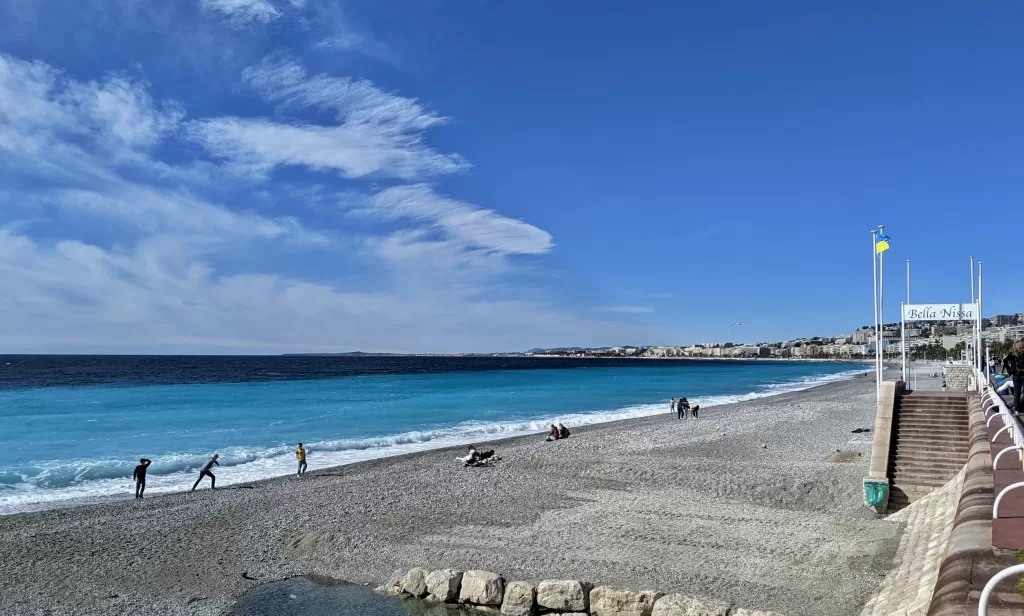 On my second visit, part of a Riviera study trip with my study program, I had the opportunity to stay in town for a few days and truly savor the beach. The water at the Nice coast often shows varying colors. On a clear, sunny day, you might see shades like Baby Blue or Jelly Blue near the shore, transitioning to a deeper Navy Blue further out. The most stunning views come around dusk, particularly during the blue hour when the darkening sky mirrors the sea’s shade.
On my second visit, part of a Riviera study trip with my study program, I had the opportunity to stay in town for a few days and truly savor the beach. The water at the Nice coast often shows varying colors. On a clear, sunny day, you might see shades like Baby Blue or Jelly Blue near the shore, transitioning to a deeper Navy Blue further out. The most stunning views come around dusk, particularly during the blue hour when the darkening sky mirrors the sea’s shade.
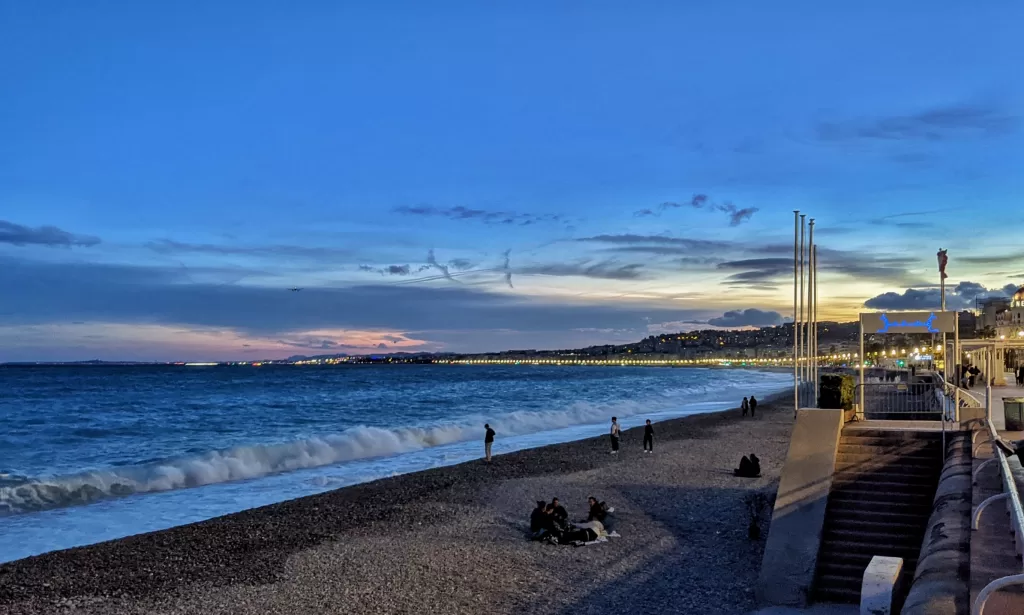
The old town of Nice is also worth a visit. Like many other historic centers I’ve explored, it forms the traditional heart of the city. Winding stone paths lead to various destinations, including some churches, but the area is best known for its popular restaurants.
 Grasse: Situated on a hill and slightly away from the coast, Grasse is an old town renowned for its suitability for retirement. It’s one of the most appealing places in France for this phase of life, thanks to its excellent air quality, hilly landscape ideal for physical activities, and an array of enchanting scents. Known as the perfume capital of France, Grasse is the birthplace of numerous perfume and fragrance scents, influencing even some of the soaps we use daily.
Grasse: Situated on a hill and slightly away from the coast, Grasse is an old town renowned for its suitability for retirement. It’s one of the most appealing places in France for this phase of life, thanks to its excellent air quality, hilly landscape ideal for physical activities, and an array of enchanting scents. Known as the perfume capital of France, Grasse is the birthplace of numerous perfume and fragrance scents, influencing even some of the soaps we use daily.
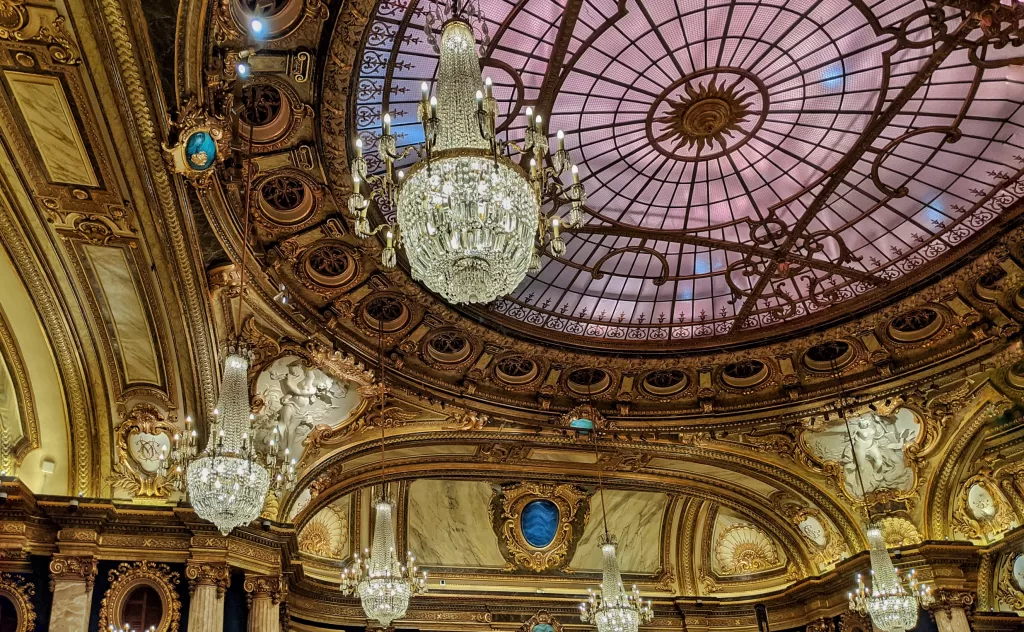 Monaco: Easily mistaken for Morocco, Monaco stands as one of the smallest yet wealthiest countries in the world. During morning and evening hours, trains to Monaco are often packed with French commuters heading to work. This city-country is uniquely constructed, stretching from the coast up steep hills. A visit isn’t complete without seeing the Monte-Carlo Casino, the cornerstone of Monaco’s wealth.
Monaco: Easily mistaken for Morocco, Monaco stands as one of the smallest yet wealthiest countries in the world. During morning and evening hours, trains to Monaco are often packed with French commuters heading to work. This city-country is uniquely constructed, stretching from the coast up steep hills. A visit isn’t complete without seeing the Monte-Carlo Casino, the cornerstone of Monaco’s wealth. 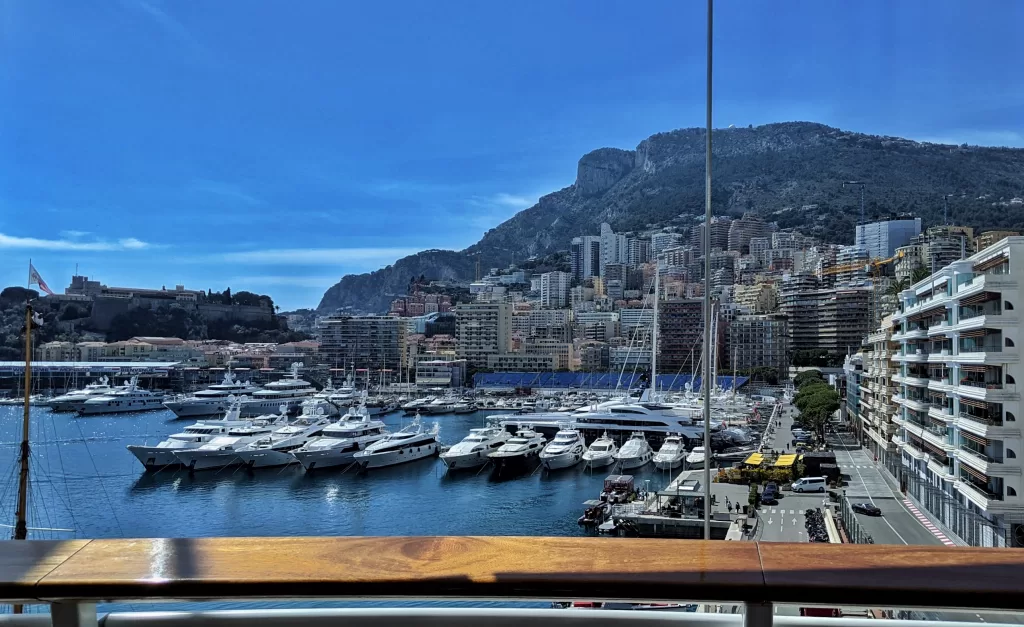 This casino’s gain is so influential that Monaco residents enjoy the luxury of no personal income tax. I had the opportunity to visit the casino with my study program and it was truly spectacular, reminiscent of an opera house. Down by the bay, a multitude of yachts are parked at the pier, surrounded by numerous yacht clubs.
This casino’s gain is so influential that Monaco residents enjoy the luxury of no personal income tax. I had the opportunity to visit the casino with my study program and it was truly spectacular, reminiscent of an opera house. Down by the bay, a multitude of yachts are parked at the pier, surrounded by numerous yacht clubs.
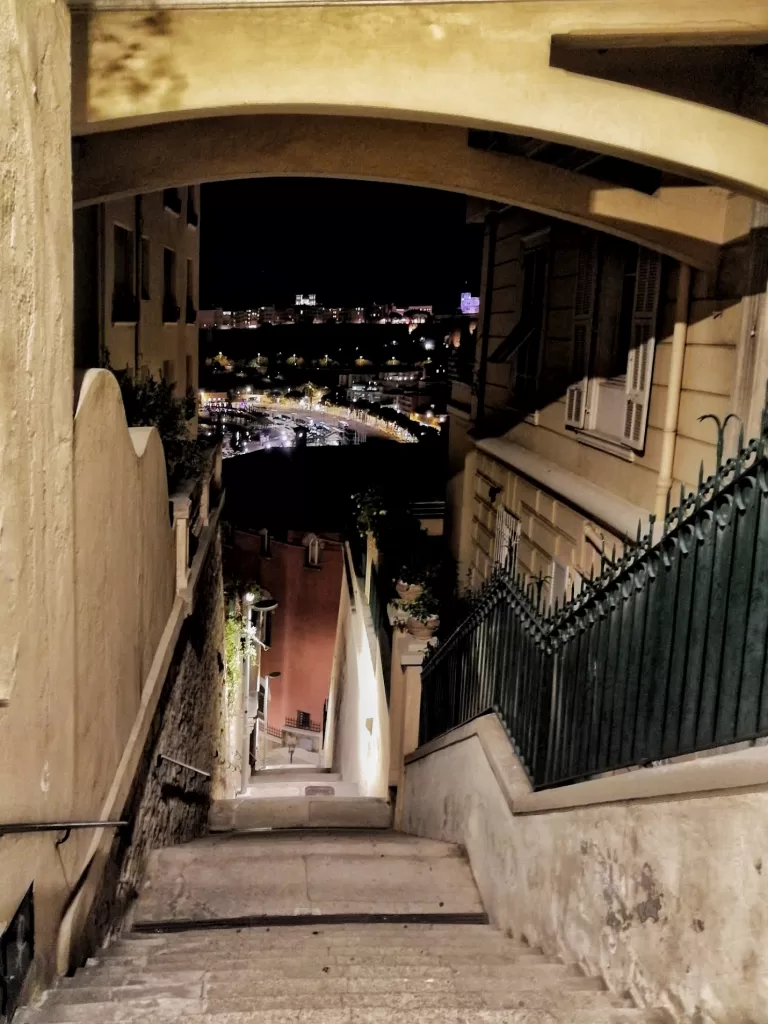 One of my most memorable experiences was watching a peaceful sunset at the Musée océanographique de Monaco, a moment I cherish deeply. A word of advice for those planning to visit Monaco: be ready for a lot of climbing. I remember feeling dizzy when I looked back to see how many stairs I had ascended.
One of my most memorable experiences was watching a peaceful sunset at the Musée océanographique de Monaco, a moment I cherish deeply. A word of advice for those planning to visit Monaco: be ready for a lot of climbing. I remember feeling dizzy when I looked back to see how many stairs I had ascended.
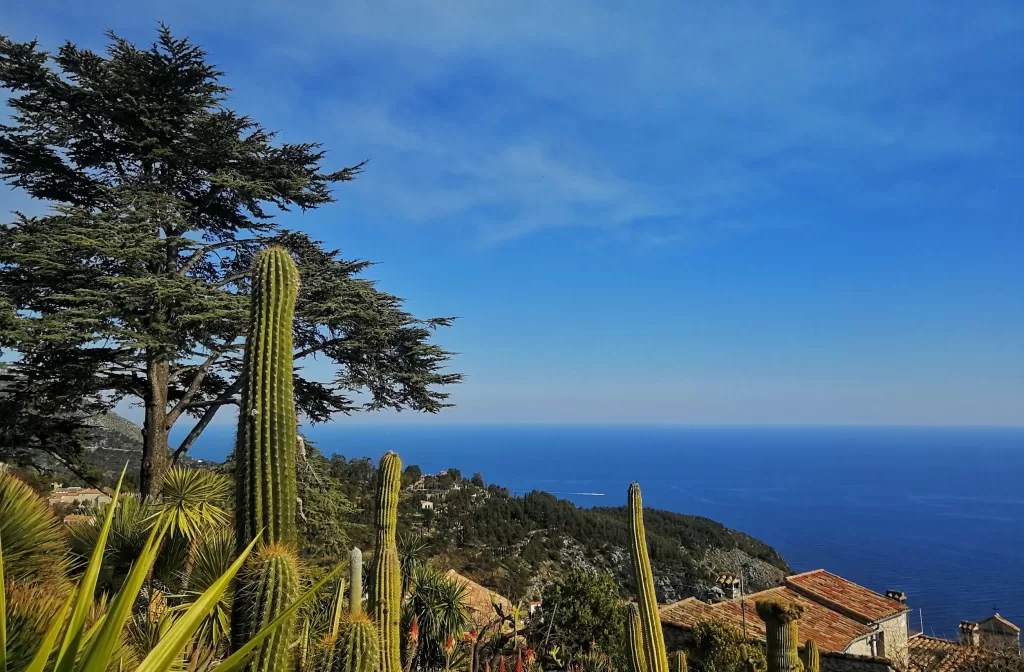 Èze: Situated between Nice and Monaco, Èze is a hilltop town that can be reached either by hiking or taking a bus. A standout attraction is Le Jardin Exotique, a Mediterranean garden that beautifully demonstrates how plants reflect the region’s dry climate. From its observation deck, visitors are treated to panoramic views of the surrounding mountains, the sea, and various towns along the Riviera, offering a picturesque glimpse into the beauty of the French Riviera.
Èze: Situated between Nice and Monaco, Èze is a hilltop town that can be reached either by hiking or taking a bus. A standout attraction is Le Jardin Exotique, a Mediterranean garden that beautifully demonstrates how plants reflect the region’s dry climate. From its observation deck, visitors are treated to panoramic views of the surrounding mountains, the sea, and various towns along the Riviera, offering a picturesque glimpse into the beauty of the French Riviera.
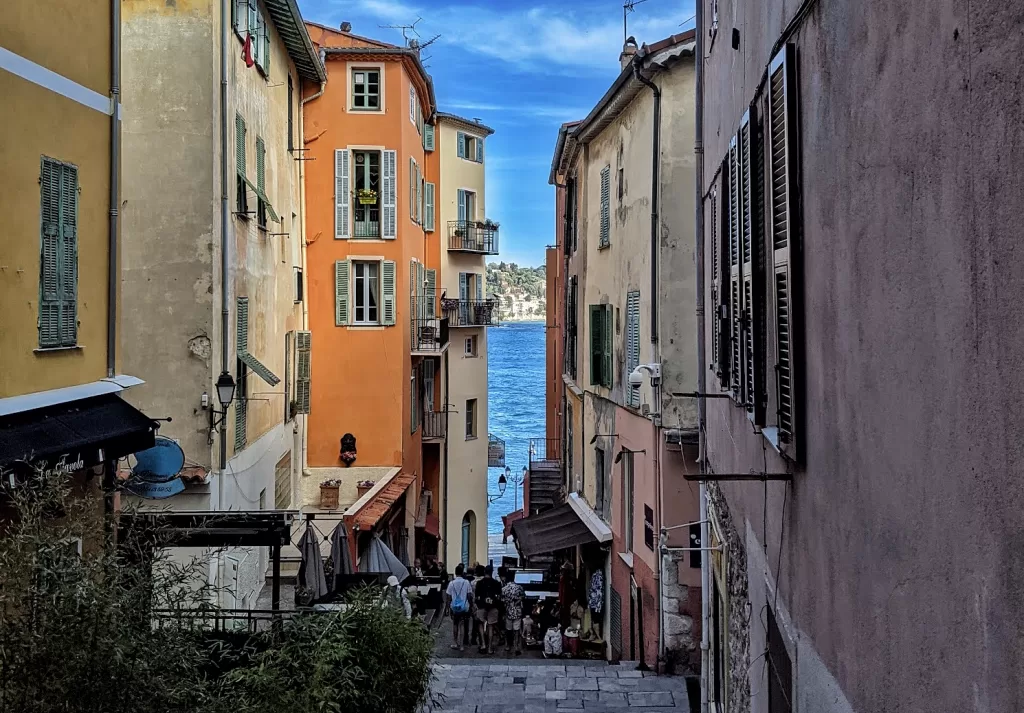 Other towns: Beaulieu-sur-Mer and Villefranche-sur-Mer are less frequented, more residential areas along the Riviera. For those seeking a peaceful retreat, Beaulieu-sur-Mer is an ideal choice. Villefranche-sur-Mer, while similar in terrain to Monaco, features a less calm bay area. Caution is advised near the coast, especially when waves surge, as you might get soaked. The force of the waves stirs up sand and dust, tinting the water near the shore a greenish-gray shade.
Other towns: Beaulieu-sur-Mer and Villefranche-sur-Mer are less frequented, more residential areas along the Riviera. For those seeking a peaceful retreat, Beaulieu-sur-Mer is an ideal choice. Villefranche-sur-Mer, while similar in terrain to Monaco, features a less calm bay area. Caution is advised near the coast, especially when waves surge, as you might get soaked. The force of the waves stirs up sand and dust, tinting the water near the shore a greenish-gray shade.
Growing up in a coastal city, I never expected to be so enchanted by another seaside landscape. Yet, the French Riviera proved me wrong. Each time I returned, the joy of being surrounded by its vivid, blue, jelly-like sea was overwhelming. Departing always brought a sense of sadness. For anyone looking to experience the Mediterranean at its best, the French Riviera stands out as the unparalleled destination.
The French Riviera: A Journey Through Côte d'Azur’s Enchanting Blue

The French Riviera, Côte d’Azur, located in southwest France, ranks as my favorite place in France. Contrasting with Paris’s often dreary weather and hectic atmosphere, the Riviera always feels bright and lively. The unique Mediterranean blue of the sea here is unforgettable.
I’ve been to the Riviera twice, both times in spring. I recommend this as the best time to visit since summers can be overly hot, and the greenery of spring complements the enchanting blue sea beautifully.
Cannes: Known mostly for its famous Film Festival, Cannes, to me, was the least remarkable city on the French Riviera. Visiting two months before the festival, I found it exceptionally quiet, with few tourists and many beach areas closed due to festival preparations. Villa Domergue, a meeting spot for the film fest jury, was inaccessible. The old town had some interesting graffiti and shows, but it was notably quiet in the evenings and mornings.

Nice: Nice stands out from Cannes as a more popular destination for tourists, thanks to its extensive coastline and the captivating blue sea next to the city. During my initial visit, I was struck by the intricately styled Mediterranean houses. My tight schedule meant I couldn’t spend much time at the beach, but departing by plane offered one of the most beautiful take-off views I’ve ever experienced! Thus, I highly recommend either flying into Nice or departing from there by air.

On my second visit, part of a Riviera study trip with my study program, I had the opportunity to stay in town for a few days and truly savor the beach. The water at the Nice coast often shows varying colors. On a clear, sunny day, you might see shades like Baby Blue or Jelly Blue near the shore, transitioning to a deeper Navy Blue further out.

The most stunning views come around dusk, particularly during the blue hour when the darkening sky mirrors the sea’s shade.

The old town of Nice is also worth a visit. Like many other historic centers I’ve explored, it forms the traditional heart of the city. Winding stone paths lead to various destinations, including some churches, but the area is best known for its popular restaurants.
Grasse: Situated on a hill and slightly away from the coast, Grasse is an old town renowned for its suitability for retirement. It’s one of the most appealing places in France for this phase of life, thanks to its excellent air quality, hilly landscape ideal for physical activities, and an array of enchanting scents. Known as the perfume capital of France, Grasse is the birthplace of numerous perfume and fragrance scents, influencing even some of the soaps we use daily.

Monaco: Easily mistaken for Morocco, Monaco stands as one of the smallest yet wealthiest countries in the world. During morning and evening hours, trains to Monaco are often packed with French commuters heading to work. This city-country is uniquely constructed, stretching from the coast up steep hills. A visit isn’t complete without seeing the Monte-Carlo Casino, the cornerstone of Monaco’s wealth. This casino’s gain is so influential that Monaco residents enjoy the luxury of no personal income tax. I had the opportunity to visit the casino with my study program and it was truly spectacular, reminiscent of an opera house.

Down by the bay, a multitude of yachts are parked at the pier, surrounded by numerous yacht clubs.

One of my most memorable experiences was watching a peaceful sunset at the Musée océanographique de Monaco, a moment I cherish deeply. A word of advice for those planning to visit Monaco: be ready for a lot of climbing. I remember feeling dizzy when I looked back to see how many stairs I had ascended.

Èze: Situated between Nice and Monaco, Èze is a hilltop town that can be reached either by hiking or taking a bus. A standout attraction is Le Jardin Exotique, a Mediterranean garden that beautifully demonstrates how plants reflect the region’s dry climate. From its observation deck, visitors are treated to panoramic views of the surrounding mountains, the sea, and various towns along the Riviera, offering a picturesque glimpse into the beauty of the French Riviera.

Other towns: Beaulieu-sur-Mer and Villefranche-sur-Mer are less frequented, more residential areas along the Riviera. For those seeking a peaceful retreat, Beaulieu-sur-Mer is an ideal choice. Villefranche-sur-Mer, while similar in terrain to Monaco, features a less calm bay area. Caution is advised near the coast, especially when waves surge, as you might get soaked. The force of the waves stirs up sand and dust, tinting the water near the shore a greenish-gray shade.

Growing up in a coastal city, I never expected to be so enchanted by another seaside landscape. Yet, the French Riviera proved me wrong. Each time I returned, the joy of being surrounded by its vivid, blue, jelly-like sea was overwhelming. Departing always brought a sense of sadness. For anyone looking to experience the Mediterranean at its best, the French Riviera stands out as the unparalleled destination.